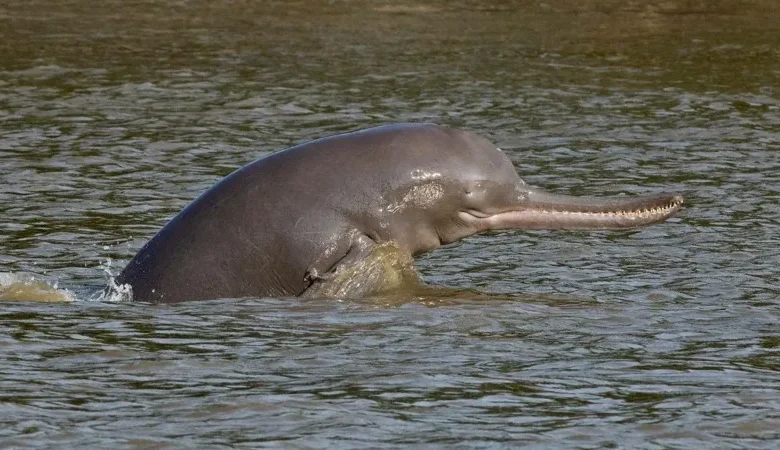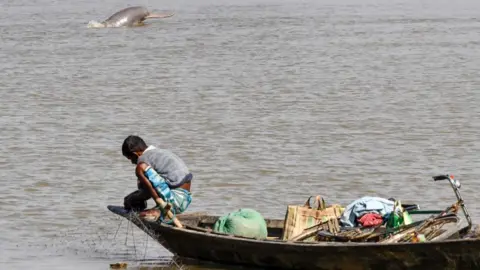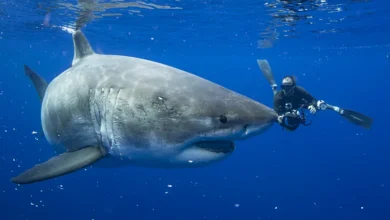India’s rivers are home to 6,000 dolphins – but they are in trouble

The origins of river dolphins are as fascinating as the creatures themselves. Often called “living fossils”, they evolved from marine ancestors millions of years ago, say scientists.
When the sea once flooded low-lying areas of South Asia, these dolphins moved inland – and when the waters receded, they stayed. Over time, they adapted to murky, shallow rivers, developing traits that set them apart from their ocean-dwelling cousins.
Experts say the new survey is crucial for tracking river dolphin populations. Since 1980, at least 500 dolphins have died – many accidentally caught in fishing nets or killed deliberately – highlighting the ongoing threat to the species.
Conservationist Ravindra Kumar Sinha says that up until the early 2000s, there was very little awareness about river dolphins.
In 2009, the Gangetic river dolphin was declared India’s national aquatic animal to boost conservation. Steps like a 2020 action plan and a dedicated research centre in 2024 have since helped revive its numbers.
However, conservationists say there’s still a long way to go.
Dolphins continue to be poached for their flesh and blubber, from which oil is extracted to use as fishing bait. Other times, they collide with boats or get caught in fishing lines and die.
Nachiket Kelkar of the Wildlife Conservation Trust told Sanctuary Asia magazine that many fishermen often didn’t report accidental deaths of dolphins fearing legal trouble.
Under Indian wildlife laws, accidental or targeted dolphin killings are treated as “hunting” and carry strict penalties. As a result, many poor fishermen quietly dispose of the carcasses to avoid fines.

River cruise tourism, which has picked up in India in the past decade, has further threatened their habitat. Dozens of cruise trips operate on both the Ganges and Brahmaputra rivers.
“There’s no doubt that disturbances from cruises will gravely impact the dolphins, which are sensitive to noise,” conservationist Ravindra Kumar Sinha told The Guardian newspaper.
Mr Sinha believes that increased vessel traffic could push Gangetic dolphins towards extinction, much like it did to Baiji dolphins in China’s Yangtze river.
River dolphins face threats partly due to their own evolution. Nearly blind, they rely on echolocation – high-pitched sound pulses that bounce off objects and return as echoes – to navigate murky waters. While this trait suits their habitat, it also makes them vulnerable to modern threats.
Their poor eyesight and slow swimming speed make river dolphins especially prone to collisions with boats and other obstacles. Adding to their vulnerability is their slow reproductive cycle – they mature between six and 10 years of age and females typically give birth to just one calf every two to three years.
But Mr Sinha is hopeful about the future of river dolphins in India. “Government initiatives have played a big role in saving the dolphins. A lot has been done but a lot more remains to be done too,” he says.










